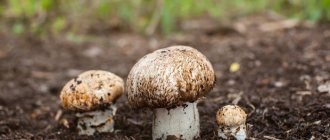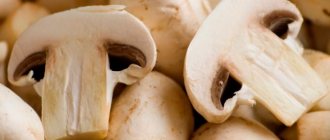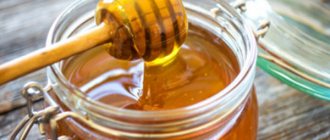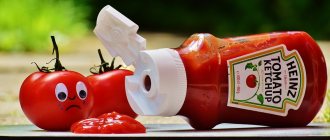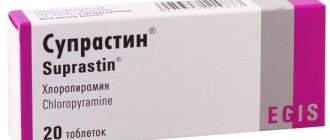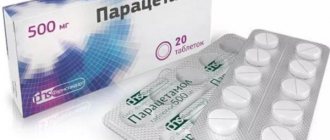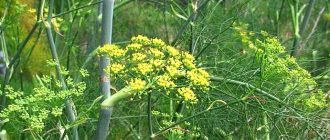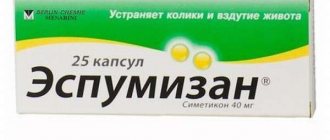At what age can champignons be given to children?
Many adults like dishes with mushrooms, but when a child appears in the family, mothers often hesitate to cook mushroom soup or potatoes with mushrooms for the family, knowing that the baby will probably want to try such food.
Opinions about the age of including mushrooms in children's diets differ among both parents and doctors. And if almost everyone has a rather wary attitude towards wild mushrooms, then there is debate about the possibility of children consuming champignons. Some argue that these mushrooms are much easier to digest than forest mushrooms and can easily be included in children’s menus if you choose and prepare them correctly. Others are sure that children do not need any mushrooms, not even champignons. Let's figure out when you can prepare a dish with champignons for your baby and whether such mushrooms are healthy for children.
Benefits of mushrooms
Due to possible problems with absorption, many adults classify mushrooms as a useless food that should not be offered to children at all. However, quality mushrooms have quite high nutritional value. They provide the human body with vegetable proteins, fiber, vitamins C, PP, D, A, group B, calcium, easily digestible fats, potassium, phosphorus and many other compounds. In addition, champignons are a source of enzymes and organic acids.
It should be noted that most of the beneficial substances in mushrooms are concentrated in their caps, and chitin, which is harmful to the child’s body, is more present in the legs. For this reason, only mushroom caps are suitable for baby food.
When can mushrooms be given to children?
I’ll start with the most important and most important thing - everyone should always treat mushrooms collected in the forest with special caution - any healthy adult can be poisoned by mushrooms.
Forest mushrooms have many positive qualities; they contain a large amount of protein, minerals and B vitamins. But doctors do not recommend introducing forest mushrooms into the diet of children, since they are quite difficult to digest. Mushrooms contain a large amount of hard-to-digest fiber, which makes it more difficult to absorb other beneficial substances into the body. Also, you need to be sure of the environmental cleanliness of the place where mushrooms are collected, since as they grow, they absorb toxic substances from the soil. Children's bodies are very sensitive to toxins. The child’s body does not have enough enzymes to digest such a heavy product.
Wild mushrooms, a little, can be given to children no earlier than 5-6 years old, and better yet, from 7-12 years old. Even for adults, mushrooms should be a delicacy food - they should not be eaten in large quantities for breakfast, lunch and dinner.
Mushrooms collected in the forest should not be eaten by children (or people of any age) with gastrointestinal problems.
Why are mushrooms harmful?
Restrictions on the consumption of mushrooms in childhood are associated not only with the content of chitin in such a product, which is not digested and interferes with the absorption of other nutrients. Forest mushrooms absorb many substances from the soil, including dangerous ones. But, if we are talking about champignons purchased in a store, such a shortage of mushrooms is excluded. For this reason, the inclusion of champignons in the diet of children is permissible somewhat earlier than mushrooms collected in the forest.
More information about the benefits and harms of champignons is described in the video:
At what age should it be given?
Some doctors do not recommend giving any mushrooms to children under 10-14 years of age, but many pediatricians, including Evgeny Komarovsky, believe that champignons can be tried from the age of 2. What all doctors are unanimous about is that it is unacceptable to offer champignons to a one-year-old child.
A child who is 2 years old can be given mushrooms that are grown industrially. At first, they are included in the children's menu in small quantities, for example, as part of a sauce or by adding a few mushrooms to the main dish. Over time, you can prepare peeled and well-cooked pieces of mushrooms for your child. In this case, the frequency of consumption of dishes with champignons for a child under 5 years old (for example, 4 years old) is limited to once a week.
Many doctors recommend delaying exposure to any mushrooms, including champignons, until the age of 7-10 years. They associate this recommendation with the fact that school-age children have a fully developed digestive system, so there will be no problems with digesting mushroom dishes. If a child has any problems with the gastrointestinal tract, introducing mushrooms into his diet before the age of 10 is extremely undesirable.
Is it possible to give mushrooms to a child: at what age, why not?
Mushrooms add aroma and piquant flavor notes to food. If there are children in the house, this product must be handled with caution. An exact answer to the question “When should I start giving mushrooms to children?” does not exist.
- Valuable properties of mushrooms
- Harm from mushrooms
- Age categories
- Conclusion
Mushrooms in children's diet
Valuable properties of mushrooms
Useful properties of mushrooms:
- Proteins: 1 kg of fresh porcini mushrooms contains the same amount of protein as 100 g of fresh meat.
- Polysaccharides: contained in small quantities, are practically not released during processing in the human body due to the fact that they are mainly part of fiber.
- Fats: found in several types: saffron milk caps, white mushrooms, champignons. Their fats are easily absorbed even by an immature child’s body.
- Sugary substances: adds a unique pleasant taste.
- Resins: found in large quantities in saffron milk caps, milk caps and milk mushrooms. Thanks to it, a sharp, even pungent taste appears, which can scare away kids.
- Microelements (potassium, phosphorus, etc.) and minerals: this product contains even more of them than some fruits and vegetables.
- Essential oils: give the product an unusual smell that cannot be confused with anything else.
- Vitamins: white ones contain niacin (nicotinic acid, PP, B3), it is also present in chanterelles, boletus, aspen and honey mushrooms, vitamins D, C and A are present, B vitamins are contained in larger quantities than in many cereals;
- Organic acids: they help strengthen the immune system and fight viruses and infections.
Also contains: antioxidants and amino acids, lecithin, starch (in some types) and water, beta-glucose and glycogen.
The caps contain the largest amount of useful microelements. All harmful elements mainly accumulate in the legs.
Harm from mushrooms
But mushrooms are famous not only for their beneficial qualities, but also for their harmful ones, which can harm children.
- Chitin: This biopolymer polysaccharide interferes with the body's ability to absorb nutrients. And if it enters a child’s body, it can cause allergy symptoms to other products.
- Toxins: Mushrooms have the ability to mutate or be “pollinated” by poisonous organisms growing nearby. There are false mushrooms, which are similar in appearance to edible ones, and white ones (popularly called satanic), so the fruiting bodies should be carefully examined and not given to children under 2 years of age.
- Porous body: The mushroom provides a site for the formation of spores and is a natural sponge that absorbs all the “good” and “bad” trace elements from the soil and air in its territory. The forest soil contains a lot of dust, toxins, and poisons that penetrate the forest organism and thereby make it dangerous for consumption. All these harmful components prove that children should not eat mushrooms, especially under 2 years of age. To be safe, boil them up to 3 times for 30 minutes and drain the water each time. This will help get rid of harmful chemicals.
Age categories
It is better not to give mushrooms to children under ten years of age.
Children cannot eat this product until a certain age. Pediatricians do not have a consensus on the issue of recommending at what age mushrooms can be given to a child. The numbers range from 2 to 7 years, some even say 10 years of age.
Irina Selyutina (Biologist):
For the majority of the country's population, mushrooms are a traditional and beloved dish on both holiday and regular menus. Children, looking at their parents, are drawn to try something new that lies on the table and smells so attractive. But in the case of mushrooms, as with a number of other products, there is no need to rush to introduce them into the children's diet. The following points are very important:
- children under 10 years old can be offered to try mushroom dishes only occasionally;
- Children aged 12 years and older can be given mushrooms once every 7-10 days;
- it is better to use industrially grown champignons and oyster mushrooms, rather than wild mushrooms, the processing of which involves a lot of nuances;
- You shouldn’t give your kids even small whole mushrooms so that they don’t choke, but only crushed ones. If this happens, make sure that the product has been chewed well;
- if the main dish is prepared quickly (omelet), then the mushrooms should be cooked separately so that they are properly processed;
- It is better to postpone heavy combinations of mushrooms and dough in pies, pancakes or pizza until adolescence.
Each parent must take into account the characteristics of their child’s body, whether he has allergies to foods, immunity to viruses and diseases. All these factors will help you understand whether the body can absorb this product.
Recommendations for parents:
- This product in any form is not given until 2 years old.
- From 2 years of age: if the baby is healthy, eats well, is not sick, and is not allergic to certain foods, then the product is gradually introduced into the diet. Champignons and oyster mushrooms must be purchased in a store and properly processed. You need to start with small doses; it is better to prepare a sauce or light soup, then the amount of chitin will be minimal and will not cause harm.
- From 5 years old: they try to give white mushrooms, chanterelles, saffron milk caps, and champignons, but try to use only the caps. They need to be processed carefully: boil them several times and drain the water. It is better to finely chop them or cook them in a blender and add them to sauce or soup, but such dishes are given no more than once a week and not for dinner. Before going to bed, the product leads to heaviness and pain in the stomach.
- From 7 years: the gastrointestinal tract is already almost formed, but you should take into account all the recommendations, do not increase the daily dose and do not change types, carefully process and finely chop or blend in a blender.
- From 10-12 years: this is the most suitable age for eating mushrooms in different types. If the baby’s health is weakened, especially the digestive tract, then it is better not to give them or allow them very little and quite rarely. Salted and pickled fruits have a special taste, but giving mushrooms to children with such processing is strictly prohibited.
Can small children be given mushrooms? – Doctor Komarovsky – InterCan I give mushrooms to children? Mushrooms to children. Can? When? How many?
Conclusion
At what age to start giving mushrooms to their children is a decision made by the parents themselves. However, it is necessary to rely on common sense and the health of your child first of all. The chemical composition can have a bad effect on the child's body.
Source: https://fermoved.ru/gribyi/mozhno-li-davat-rebenku.html
How to choose champignons for a children's menu?
Children should only be given mushrooms from the store, since such champignons do not absorb harmful compounds from the soil, like wild ones. Buy small, light-colored mushrooms for baby food. Avoid buying champignons that are darkened, slippery or flabby. You should also not purchase mushrooms that are too large, as they are overripe and contain fewer nutrients.
If you buy packaged mushrooms, carefully study the information on the packaging - the date the champignons were harvested, the date they were packaged, and the expiration date. When you bring the mushrooms home, be sure to remove them from the film and store them in the refrigerator for a maximum of 24 hours. If you are not going to cook anything with them right away, you can put the champignons in the freezer, where they can be stored for up to 1 year.
Dishes with champignons for children
Delicious mushrooms such as champignons go well with vegetables, potato or meat dishes. They can be an ingredient in vegetable casseroles, cabbage rolls, omelettes, and soups.
Many adults also love a variety of pastries with mushroom filling, but it is not recommended for children’s menus, since the combination of mushrooms and dough is quite difficult to digest. Offer children pancakes, pizza or champignon pies only from the age of 14.
Cream soup
For this dish, take one onion, one potato and one medium carrot, as well as about 500 g of champignons. The process for preparing the soup will be as follows:
- After pouring 500 ml of water into the pan, place the container on the stove and wait until it boils.
- While the water is heating, peel and chop the vegetables finely, then place them in boiling water.
- After leaving the onions, carrots and potatoes to cook, wash, peel and chop the mushrooms.
- After dipping the champignons into the vegetable broth, simmer the soup until all the ingredients are ready over low heat.
- After removing the pan from the stove, use an immersion blender to puree the soup.
- Salt the finished dish to taste, sprinkle with herbs and season with sour cream. It is delicious served with oven-dried wheat croutons.
Most children like this soup, but it should not be given to a child who has not tried champignons before. Let the baby first get acquainted with mushroom dishes in the form of sauce.
The sauce made from champignons allows you to add a new aroma and pleasant taste to the usual dishes of chicken, potatoes or rice. This recipe is suitable for children over three years old:
- Wash, peel and boil 8-12 small champignons in 500 ml of water.
- Cut one peeled onion and lightly fry in a small amount of vegetable oil, then add to the broth.
- Fry a tablespoon of flour in a dry frying pan. When it acquires a golden hue, add salt and, stirring constantly, pour hot mushroom broth into the fried flour.
- Cook the sauce for about 10 minutes, then remove from heat and add 2 tbsp to the dish. spoons of butter. If desired, you can also add chopped herbs to this mushroom sauce.
Champignons from the store
And the second is very important, especially for those who cannot live without mushrooms. Mushrooms such as champignons and oyster mushrooms grown under artificial conditions can be eaten safely by pregnant and nursing mothers and children over 1.5 years old in small quantities. All this is permissible, of course, under one obligatory condition - if the mushrooms are properly prepared and fresh.
From my personal experience I want to say: I live in an area where a large number of mushrooms grow, and different people have different attitudes towards their consumption. Some eat many different mushrooms in large quantities and in any form, and without much caution give them to children from a very young age.
I know mothers who do not eat any mushrooms at all from the beginning of pregnancy until the end of breastfeeding and do not give children absolutely any mushrooms until they are 10-12 years old. Both categories of parents and their children are alive and healthy.
But I know one thing for sure: it has never been shameful to take good care of your health and the health of your children. You need to know and remember the danger that wild mushrooms can pose, and never neglect it. Be careful! Take care of your health and the health of your children!
Is it possible to give mushrooms to a child, and at what age?
Sometimes you really want to diversify the daily family menu and please your family with potatoes with mushrooms or aromatic mushroom soup. But what if you have a small child who will probably ask for a portion of a new interesting dish? There is a huge amount of conflicting data about whether mushrooms can be given to children. And very often parents simply cannot find a clear and unambiguous answer to this question. How to distinguish myths from objective reality here? Let's try to figure it out.
Are mushrooms good for children?
And we’ll start, perhaps, with myth No. 1: mushrooms are a useless product for children. Which is not true at all. High-quality mushrooms have the same nutritional value for both adults and children.
If we consider each element included in their composition, doubts will disappear: mushrooms are healthy!
Nutritional value of some types of mushrooms per 100 g of product
- Protein substances. There is as much protein in a kilogram of mushrooms as in 100 grams of meat. However, it is poorly absorbed due to fiber, which is their basis. Therefore, when including mushrooms in a child’s menu, they should be cut into small pieces and the child should be taught to thoroughly chew any food he consumes.
- Carbohydrates. There are, but, again, mushroom fiber is practically not digested.
- Fats. Champignons, porcini mushrooms, and saffron milk caps are rich in them (they are easily digestible, including by children).
- Sugary substances. It has a pleasant, sweetish taste.
- Resinous substances. They are found in mushrooms, milk mushrooms, and saffron milk caps and make their taste sharper. It is not recommended to introduce your child to mushrooms with these particular varieties.
- Minerals . For example, such as phosphorus and potassium are contained in mushrooms in greater quantities than in some fruits and vegetables.
- Essential oils . They add a unique scent to these forest gifts of nature.
- Vitamins. A, B, C, D, PP, which are important for the body, are also found in mushrooms. And there are even more B vitamins than in cereals.
- Organic acids. Stearic, acetic, lactic, oil, oleic. They strengthen the immune system and fight infections.
- Enzymes. Champignons are especially rich in them. Accelerate the breakdown of proteins, fats, carbohydrates.
In addition, mushrooms contain ordinary water, antioxidants, animal starch, glycogen, lecithin, amino acids, and ß-glucans.
It is worth noting that proteins, fats and sugars are concentrated in the caps. Accordingly, the nutritional value of the legs is low. And chitin, which is prohibited for children, is contained in the legs. Hence the conclusion: when giving mushrooms to a child, you need to start with the caps.
At what age can a child be given champignon mushrooms?
Hi all. I come to you with a question. Today we have stewed potatoes with champignons (bought at the store) for dinner. The child is 4 years old. Is it possible to feed a child this dish? Dr. Komarovsky believes that champignons can be given from 3 years of age. https://www.youtube.com/watch?v=U0BdWSKZwfs
Photo from the internet. My dish is still stewing.
More information from the internet.
Nutritional value of some types of mushrooms per 100 g of product
Protein substances. There is as much protein in a kilogram of mushrooms as in 100 grams of meat. However, it is poorly absorbed due to fiber, which is their basis. Therefore, when including mushrooms in a child’s menu, they should be cut into small pieces and the child should be taught to thoroughly chew any food he consumes.
Carbohydrates. There are, but, again, mushroom fiber is practically not digested.
Fats. Champignons, porcini mushrooms, and saffron milk caps are rich in them (they are easily digestible, including by children).
Sugary substances. It has a pleasant, sweetish taste.
Resinous substances. They are found in mushrooms, milk mushrooms, and saffron milk caps and make their taste sharper. It is not recommended to introduce your child to mushrooms with these particular varieties.
Minerals. For example, such as phosphorus and potassium are contained in mushrooms in greater quantities than in some fruits and vegetables.
Essential oils. They add a unique scent to these forest gifts of nature.
Vitamins. A, B, C, D, PP, which are important for the body, are also found in mushrooms. And there are even more B vitamins than in cereals.
Organic acids. Stearic, acetic, lactic, oil, oleic. They strengthen the immune system and fight infections.
Enzymes. Champignons are especially rich in them. Accelerate the breakdown of proteins, fats, carbohydrates.
If we summarize all the collected tips, they will look something like this.
Up to two years. There is a unanimous opinion among all doctors that mushrooms should not be given to children under this age.
From two to five years. In this age category, doctors' opinions were equally divided. Some people believe that mushrooms can be introduced into a child’s diet from the age of two. And some - that only from 5 years old. But everyone imagines the process of introducing a child to this product in the same way: these should be cultivated and industrially processed mushrooms, but in small quantities. First, you should serve them as a seasoning for the main dish or as a sauce. After some time, you can offer your child well-boiled and peeled, finely chopped pieces, but not more than once a week.
From the age of seven. This age is considered optimal for introducing a child to mushrooms, since it is by the age of seven that children’s digestive organs are fully formed. It is worth noting that all the recommendations listed above remain in force: you need to start with well-processed oyster mushrooms and champignons, in small quantities and gradually.
From the age of ten. If a child has any health problems, even minor ones, and even more so related to the digestive tract, it is better to introduce mushrooms into his diet no earlier than he turns 10 years old. Otherwise, he will then have to suffer the consequences of your haste.
Thanks to all.
But why then are they harmful?
Considering all the usefulness of mushrooms for children and adults, when asked by parents whether it is possible to give mushrooms to children, pediatricians categorically answer no. There are only two reasons for this ban:
- Chitin. This is what the shell of animals consists of. And it is present in sufficient quantities in mushrooms. This substance is a persistent compound that is not digested even by an adult body and interferes with the absorption of other nutrients.
- Sponge. It absorbs harmful substances from the environment. Many parents ignore this reason, citing the fact that everyone has been eating mushrooms for a long time, but the human race has not died out. But it is worth taking into account the environmental situation that existed before and the one that exists now.
And finally, the main question: if children can still be given mushrooms, then at what age should this be done?
How to properly introduce it into a child’s diet?
There are many possible answers to the question at what age is it safe to give mushrooms to children. Moreover, the age range of these answers is quite large - from 2 to 10 years.
How to come to some common denominator? The best thing for young parents would be not to take information from one source, but to study a variety of materials regarding this issue. And most importantly, do not forget to consult with the doctor observing the child. Only then can you draw your own conclusion.
This is what champignons look like. It is recommended that you introduce your child to them first.
If we summarize all the collected tips, they will look something like this.
- Up to two years. There is a unanimous opinion among all doctors that mushrooms should not be given to children under this age.
- From two to five years. In this age category, doctors' opinions were equally divided. Some people believe that mushrooms can be introduced into a child’s diet from the age of two. And some - that only from 5 years old. But everyone imagines the process of introducing a child to this product in the same way: these should be cultivated and industrially processed mushrooms, but in small quantities. First, you should serve them as a seasoning for the main dish or as a sauce. After some time, you can offer your child well-boiled and peeled, finely chopped pieces, but not more than once a week.
- From the age of seven. This age is considered optimal for introducing a child to mushrooms, since it is by the age of seven that children’s digestive organs are fully formed. It is worth noting that all the recommendations listed above remain in force: you need to start with well-processed oyster mushrooms and champignons, in small quantities and gradually.
- From the age of ten. If a child has any health problems, even minor ones, and even more so related to the digestive tract, it is better to introduce mushrooms into his diet no earlier than he turns 10 years old. Otherwise, he will then have to suffer the consequences of your haste.
And these are oyster mushrooms. They can also be one of the first to be introduced into children’s diets.
For the first acquaintance of a child’s body with mushrooms, pediatricians advise choosing champignons or oyster mushrooms. Then you can introduce saffron milk caps and porcini mushrooms. You need to start with sauces and broths, gradually moving on to soups. It is advisable not to give salted, fried, pickled mushrooms to children at all, since the later they try dishes that are difficult for the stomach, the better it will be for their body.
Another, important piece of advice: never listen to your friends and neighbors who say that their children eat mushrooms from an early age, and everything is fine with them.
Each child is individual. This means that the consequences for everyone can be different: someone will take the new product well, but someone will disrupt the functioning of the stomach, which will then be very difficult to restore.
Can children have champignons?
One of the most important factors influencing the development of a child is his nutrition, and therefore many parents try to make their child’s diet as healthy and balanced as possible.
However, it is often quite difficult to determine whether a particular product is considered healthy or unhealthy food, which raises a lot of questions, for example, can children eat champignons? In this article we will try to find out which group this type of mushroom belongs to, and whether they pose any danger to the health of the little gourmet.
At what age can a child eat champignons?
If you take a serious look at the issue of the safety of champignons for a child’s body and study several sources of information at once, most of them will say that such products are strictly prohibited for children under 7, and sometimes up to 14 years old.
It is usually indicated that by eating even a small amount of such mushrooms, a child runs the risk of developing serious digestive problems, and regular consumption of champignons generally leads to malfunctions in the functioning of the entire body.
In fact, such information is very outdated and completely untrue. Of course, if consumed in excess, champignons can cause some digestive problems, but the same can be said about almost any food.
Of course, each child is individual and it may well happen that such an early introduction will not go too smoothly. That is why, in order to definitely protect your baby from any negative consequences, champignons are added to his menu after two years. By this time, the baby’s digestive system will already be fully functioning and will react normally even to such a difficult-to-digest product.
How many champignons can a baby eat?
Here we should say a few words about how much champignons a child can eat so as not to experience any digestive problems.
- If we are talking about very young children, then they are allowed to eat about 100 grams of champignon soup, no more than 1-2 times a week.
- For five years of age, it is allowed to eat about 50 grams of prepared mushrooms (stewed or boiled).
- Teenage children can eat from 100 to 150 grams of champignons once a day.
The benefits of champignons for children's health
Many parents prefer to play it safe when it comes to feeding their children - even if doctors’ opinions regarding the safety of the product have changed dramatically over the years, they still try not to give it to their child.
This is especially true in cases where the usefulness of food is in question or almost nothing is known about it. It is the second option that is relevant for champignons - everyone knows that such mushrooms are poorly digested, but no one mentions that they are extremely useful, especially if we are talking about benefits for a growing body.
- Champignons are a high-protein food, so eating them can help lower blood cholesterol levels . Thanks to this, the vessels become more elastic and durable, which reduces the risk of developing diseases associated with the cardiovascular system.
- Such mushrooms are an excellent source of such trace elements as iron . It is involved in a lot of processes taking place in our body, but its most important task is to ensure active hematopoiesis. For this reason, regular consumption of champignons promotes better blood production, which prevents anemia.
- Champignons contain linoleic acid . This substance is known for its ability to destroy cancer cells and inhibit their spread. In addition, the systematic intake of this acid into the body can prevent the development of cancer.
- Mushrooms are considered one of the best foods for diabetics because they contain slow-release carbohydrates. When digested, they gradually increase blood sugar levels, which eliminates the possibility of an attack.
- Also, due to the high protein content, champignons help stabilize blood glucose levels , which has a positive effect on the condition of the whole body.
- One of the most important features of champignons is the presence of a large amount of calcium in them . This mineral is extremely important for children, as it is necessary for intensive growth and the construction of new bone tissue. Additionally, calcium strengthens bones and teeth, making them very strong.
- Champignons also contain vitamin D , this substance helps the body better absorb nutritional compounds from food, which leads to an improvement in the condition of all organs and systems in the child’s body.
Mushroom poisoning
And do not forget that mushrooms are also dangerous because some of their species contain poisons. Mushroom poisoning can lead to the most tragic consequences.
Often a child suffers due to the negligence of his parents who gave him an inedible mushroom. And sometimes the amount of mushrooms a child eats simply exceeds reasonable standards.
No one is immune from such cases. Therefore, you simply need to know the symptoms of childhood mushroom poisoning and be able to provide first aid before the ambulance arrives.
Mild poisoning
The condition is not critical
- Symptoms of mild poisoning plus pain in the abdomen (the pain is tolerable).
Moderate poisoning
- All symptoms of mild poisoning.
- Increasing, intolerable abdominal pain.
- Constriction of the pupils of a child.
- Profuse salivation.
Cholera-like poisoning
- Weakness.
- Lethargy.
- Yellowness of the skin of the body.
- Severe vomiting.
- Semi-delirious state (after some time).
- Abdominal pain.
- Unbearable headache.
- Unexpected and rapidly developing symptoms.
Fly agaric poisoning
- Spasms, convulsions.
- Profuse salivation.
- Changed pupil diameter.
- Hallucinations.
- An excited state or complete apathy.
- Heavy sweating.
- Constant vomiting.
Important! If a child has a fever, the poisoning is bacterial and not toxic. And it can be treated much more successfully.
Every parent must know all of these symptoms in order to correctly determine what is happening to their child, as well as provide competent, timely first aid before the doctor arrives.
What to do if a child is poisoned by mushrooms?
- Do not panic.
- Call emergency medical assistance.
- Wrap the baby in a blanket or blanket and cover it with heating pads. The harmful helvella acid found in mushrooms is destroyed at high temperatures.
- If the child is conscious, find out what mushroom he ate (this data will help in treatment).
- If there is no vomiting, you need to induce it artificially. Give the baby warm water to drink, and then use a small spoon or finger to lightly press on the root of the tongue.
- Give activated carbon (the amount of carbon should correspond to the child’s weight).
- Drink hot tea.
- Give an enema.
Do not give your baby anything sour (acid helps toxic substances be absorbed into the body faster).
Be extremely careful and careful when including mushrooms in your child’s diet. After all, no, even the most delicious and aromatic dish, will ever justify the consequences that such a tasting can result in for a toddler.
At what age can children eat mushrooms - recommended age, advice from Dr. Komarovsky
Fried, salted and pickled mushrooms are an attribute of any holiday table. Such dishes are considered a real delicacy, without which it is difficult to imagine the diet of an adult. However, many parents wonder at what age children can eat mushrooms. After all, this is quite heavy food for a child, sometimes causing serious health consequences.
The benefits and harms of mushrooms for children
Among other things, these gifts of nature have powerful hepatoprotective properties.
Many people consider mushrooms to be a completely useless food, but this is not true. They contain a large amount of protein, vitamins D, group B, C, A and PP, iron, zinc, potassium and selenium .
In addition, the product is rich in special biological substances that help strengthen the immune system.
Thanks to its antioxidant properties, it helps remove toxins from the body and prevents free radicals from entering.
But, despite all the positive qualities, mushrooms are considered a rather dangerous product, especially for children. You can often hear parents say that this product cannot cause any harm to the child’s body, because many themselves ate it as children.
On the one hand, they are right, but we should not lose sight of the fact that recently the environmental situation has deteriorated sharply. Mushrooms have a porous structure, like a sponge, absorbing all toxins and harmful substances.
It is the child’s body, whose digestive system is not fully formed, that reacts especially sharply to this.
Due to the hygroscopicity of mushrooms and their ability to absorb heavy metals, the potential danger to children is very high
The product contains many chitinous compounds, which are very difficult to digest. It is important to remember about the possibility of poisoning by false or conditionally edible mushrooms.
The risk of intoxication can be reduced only by collecting forest products in an environmentally friendly place and subsequent careful culinary processing.
You cannot buy mushrooms at the market, and it is advisable to eat only the caps of young mushrooms, but not fried or pickled. They are introduced into the diet gradually, starting with seasoning, light sauce or soup.
What mushrooms can be given to children and at what age?
Each pediatrician has his own opinion on this matter. Some allow mushrooms to be included in the menu from the age of 2, while others categorically prohibit the use of them until the age of 10. Almost half of the experts insist on introducing forest products into the diet in the period from 2 to 5 years, but here, too, not everything is clear.
It is important to introduce mushrooms gradually, starting with cultivated varieties
It is best to start getting acquainted with the gifts of the forest with champignons, oyster mushrooms, butter mushrooms, morels and milk mushrooms . They contain almost no proteins that are difficult to digest and are better absorbed by a young body.
In second place in terms of the content of useful substances are boletus, boletus and boletus. They are not only rich in vitamins, but also contribute to their rapid and complete absorption.
The least beneficial foods for children are chanterelles, saffron milk caps and russula.
How to properly introduce it into a child's diet
To begin with, it is better to try champignons and only as a dry seasoning for porridges and soups. Then they are gradually added to sauces, soups or meat broths.
Champignons can be replaced with oyster mushrooms, boletus mushrooms or butter mushrooms, but using only their caps. There is no need to listen to reviews from neighbors and acquaintances about the time to introduce mushrooms into the diet.
Each child’s body is individual, and what is good for one may not be suitable for another.
Soup is a dish with which you can start introducing mushrooms into your child’s diet.
A little later, if adaptation to the new product was successful, you can add it boiled to stewed vegetables or cook cutlets.
Under no circumstances should children be fed fried, pickled, raw or salted mushrooms. After all, the digestive system of a small child is not prepared to consume vinegar and salt.
Therefore, the product should only be boiled, and in several waters, and no more than 1-2 times a month.
What to do in case of poisoning
A child can even become poisoned by completely edible mushrooms if he eats them in large quantities or if they are improperly prepared. Although more often the use of poisonous (false) or conditionally edible mushrooms leads to intoxication.
Having tried one small piece, the child runs the risk of being poisoned, but not critically. Lethargy, mild abdominal pain, dizziness, and nausea may occur. Signs of moderate poisoning include the same symptoms plus profuse salivation, constriction of the pupils, and very severe pain in the abdomen.
Severe poisoning with poisonous mushrooms is characterized by:
- confusion;
- yellowing of the skin;
- painful, incessant vomiting;
- severe weakness;
- headache;
- increase in pressure.
When intoxicated with fly agaric poison, convulsions, changes in pupils, hallucinations, increased sweating, and agitation are added to the described symptoms.
Parents should know how to provide first aid to their child in case of mushroom poisoning
When a child develops such a condition, parents should not panic, but act calmly and competently.
First of all, you need to call an ambulance, and while it arrives, try to perform gastric lavage.
To do this, the child is allowed to drink as much water as possible and pressed with a finger or the tip of a spoon on the root of the tongue to induce vomiting. After which you will need activated carbon at the rate of 1 tablet per 10 kg of weight.
The baby must be well wrapped and covered with heating pads, because high temperature has a detrimental effect on helvella acid, which provokes severe intoxication. At the same time, the child is given hot sweet tea and a cleansing enema is given. These measures must be carried out before emergency assistance arrives.

